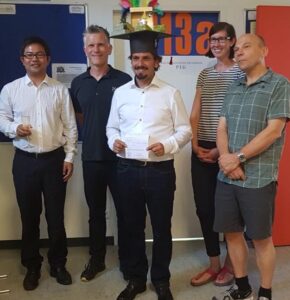Last month Dr. Michael Auer successfully defended his PhD on Advancing 3D WebGIS –
browser-based Methods for Visualization and Analysis and their Integration in Virtual Research Environments in the Context of Cultural Heritage .
We congratulate cordially! We are happy to have Michael with us as in the Big Spatial Data Analytics team of HeiGIT gGmbH at Heidelberg University.
Globally distributed and collaborative virtual research environments can bring together
researchers around the world and support their activities through appropriate tools and access to research infrastructures. With the integration of 3D geographic information systems into web-based Virtual Research Environments, we get closer to the UNESCOs vision of a knowledge society where new knowledge about cultural heritage is created collaboratively by international and interdisciplinary research teams, and where that knowledge is shared and made publicly available worldwide. In the first case, the spatial context as well as the geometric properties of over 1000 year old Buddhist stone inscriptions from the time of the Tang Dynasty in Sichuan (China) was the subject of 3-dimensional visualization and analysis.
In the second case, it was the documentation and analysis of the important World Heritage site of Cópan, located in today’s Honduras, and its surrounding valley. Both the city with its temples and the surrounding area are characterized by their unique Mayan architecture and settlement structures.
The two main areas that guide the research questions of this thesis are derived from the challenges associated with the case studies requirements. These are the extension and adaptation of the functional capabilities of 3D WebGIS and further, the question of integration of such a system into virtual research environments (VRE). The scientific results presented in this work contribute to the efficient and interdisciplinary scholarly cooperation with spatial 3D data in virtual research environments in the context of cultural heritage research, which could be enriched by methods of geography and geoinformatics.



